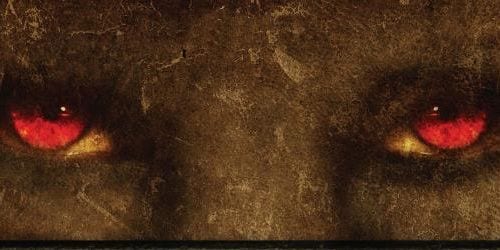
Even though the horror genre is often relegated as a “low” form of artistic endeavor, nobody can deny that it has produced some of the most popular and profitable books and films. Since the ’80s, horror has attracted the attention of indefatigable scholars and academics, as they assiduously attempt to understand the complex aesthetic and cultural issues confronted by these inherently subversive narratives.
No other cinematic or literary genre produces such a large amount of dedicated texts aimed at both, the academic scholar and the enthusiast fan. In this regard, the scholastic community has dissected the horror genre to better understand how the many philosophical, cultural, racial, gender, sexual, social, economical, and political complexities that trouble our daily world are portrayed, subverted, and criticized in a variety of macabre films and novels.
As evidenced by Fear and Learning: Essays on the Pedagogy of Horror, the extent and profundity of these scholastic studies is such that many Universities around the world are incorporating horror narratives as a mean to enhance the pedagogy of various areas of study. This enthralling book brings together a collection of 12 case studies where horror narratives have been used to improve the teaching of philosophy, psychology, gender studies, film, and classical literature.
For example, J. A. Weinstock discusses how the postmodernist movement is aptly embodied by the Evil Dead trilogy in the essay “Postmodernism With Sam Raimi (or, How I Learned to Stop Worrying About Theory and Love Evil Dead)”. It is much easier to analyze the visual and narrative structure of these bizarre films, than to try to read the indecipherable manuscripts written by Michel Foucault, Giles Deluze, and Julia Kristeva. In particular, among many other facets, Weinstock discusses how the self-reflexivity, humor, intertextuality, anachronisms, apocryphal alternate history, and retroactive continuity that characterize the Evil Dead films subscribe and faithfully represent the postmodernist movement.
Equally engrossing is the chapter by A. Ahmad entitled “When the Women Think: Teaching Horror in Women’s and Gender Studies”. As the title suggests, Ahmad talks about her experiences teaching a horror course at Carleton University. Ahmad’s course begins with Linda Williams’ “When the Woman Looks”, an essay that suggests that watching horror is a predominantly male pleasure. Carol Glover’s Men, Women and Chainsaws book is used to confront Williams’ thesis. According to Glover, horror films cannot be reduced to masochistic fantasies of female victimization. Ahmad’s article describes the structure of her course, as well as the many ways in which her students responded to the movies discussed in class.
The complex topic of the portrayal of the male gaze in horror films is retaken by K. A. Laity in “A Raven’s Eye View: Teaching Scopophilia with Dario Argento”. Unfortunately, while this is an engrossing essay on the visual pleasure produced by horrific images in the context of the films directed by Dario Argento, the pedagogical aspects of these movies are completely ignored.
More interesting are the three essays that deal with the use of modern horror narratives to enhance the study and understanding of classics of the literature. These chapters have self-descriptive titles: L. Eaton’s “The Hulking Hyde: How the Incredible Hulk Reinvented the Modern Jekyll and Hyde Monster”, M. Tittle’s “Inside… Does Not Matter: Responding to American Psycho and its Dantean Agenda”, and B. Kooyman’s “The Pedagogical Value of Mary Shelley’s Frankenstein in Teaching Adaptation Studies”.
While the above-mentioned essays make evident that the popularity of the horror genre can be harnessed to improve academic standards, L.M. Miller’s chapter showcases the danger of misreading and misrepresenting the content of these narratives. In a chapter with a completely misleading title, Miller argues in “Critical Thinking on the Dark Side” that fictional horror narratives should inspire the critical analysis of real paranormal phenomena.
Using completely misguided arguments, Miller proposes a course inspired by horror narratives, but devoted to the discussion of the possibility of supernatural phenomena. In doing so, Miller makes a series of philosophical, scientific, and logical mistakes. For example, it appears that Miller believes that the structure of natural phenomena can be examined through argumentation and debate, rather than by scientific observation and analysis.
A clear believer in supernatural phenomena, Miller avoids the compelling evidence against ghosts and the afterlife, and wrongly suggests that these topics should be discussed in the classroom, giving equal footing to scientific and pseudoscientific arguments. In a way, Miller’s proposal is not that different from those who advocate the teaching of evolution and creationism as competing theories with the same degree of credibility and empirical evidence.
As with most anthologies and compilations, Fear and Learning is a mixed bag of goodies. While some essays are engrossing and fun to read, others suffer from a gratuitous and excessive reliance on incomprehensible academic jargon. But all things considered, Fear and Learning is a fascinating book that most likely will be enjoyed by the devoted horror fan.

![Call for Papers: All Things Reconsidered [MUSIC] May-August 2024](https://www.popmatters.com/wp-content/uploads/2024/04/all-things-reconsidered-call-music-may-2024-720x380.jpg)



